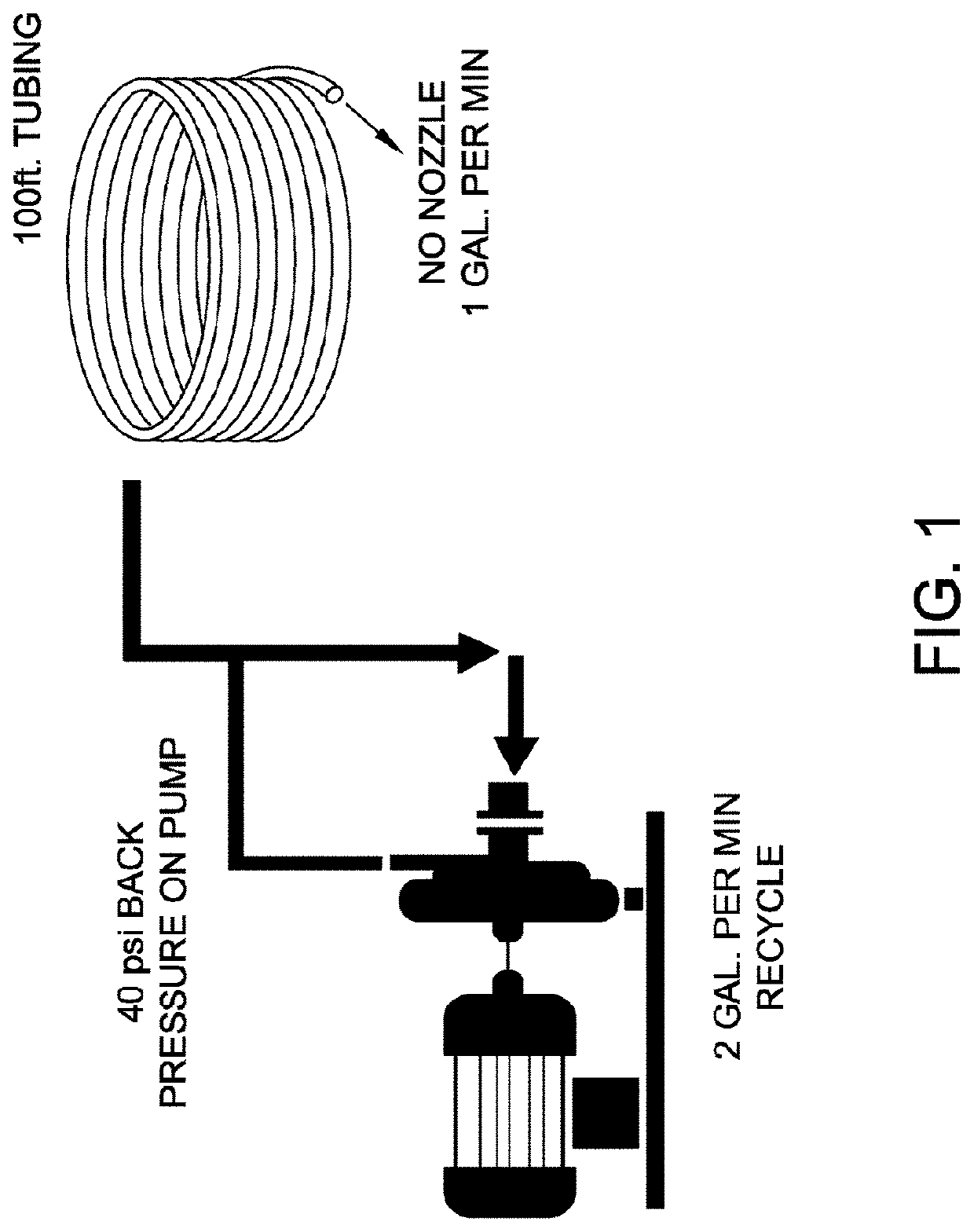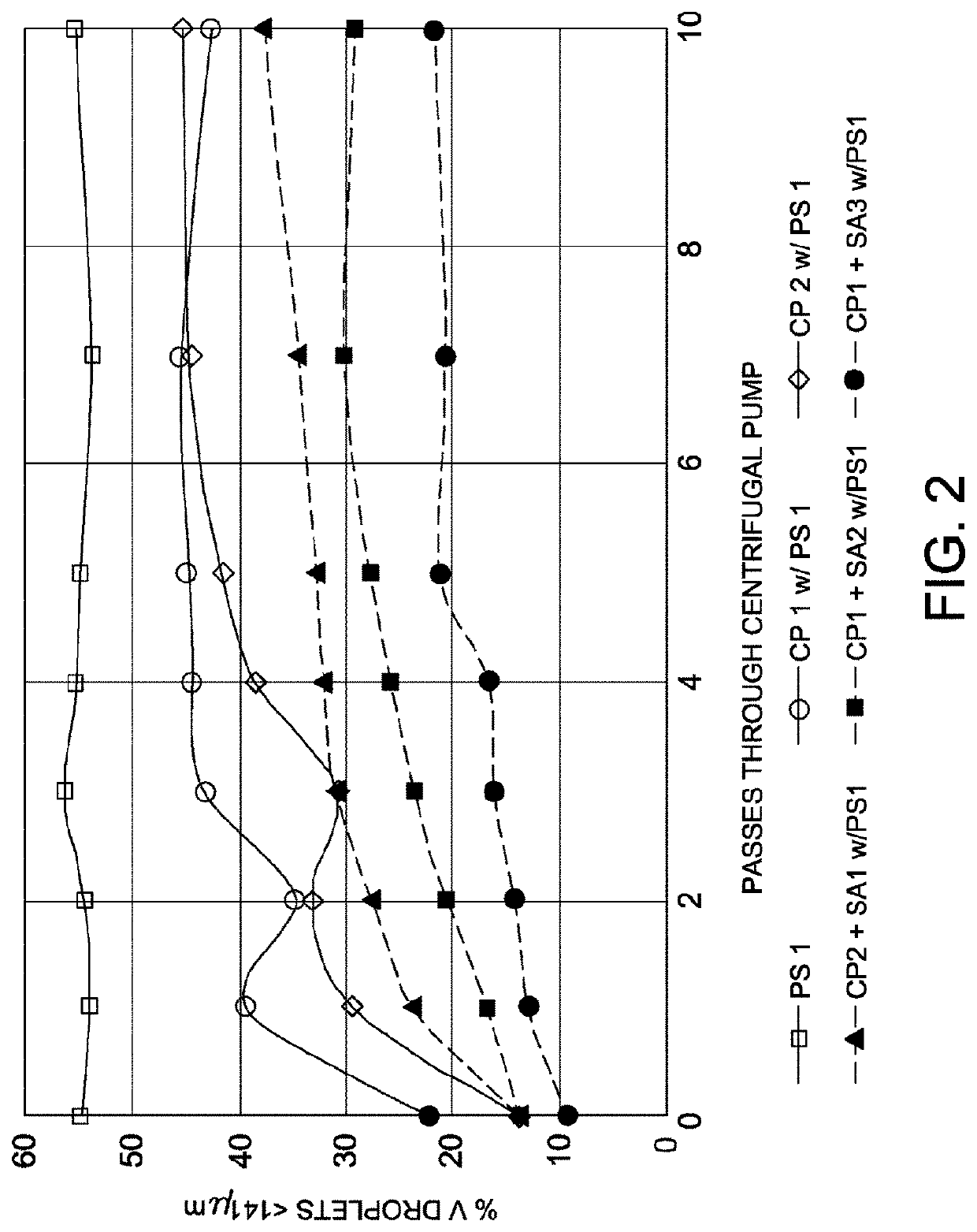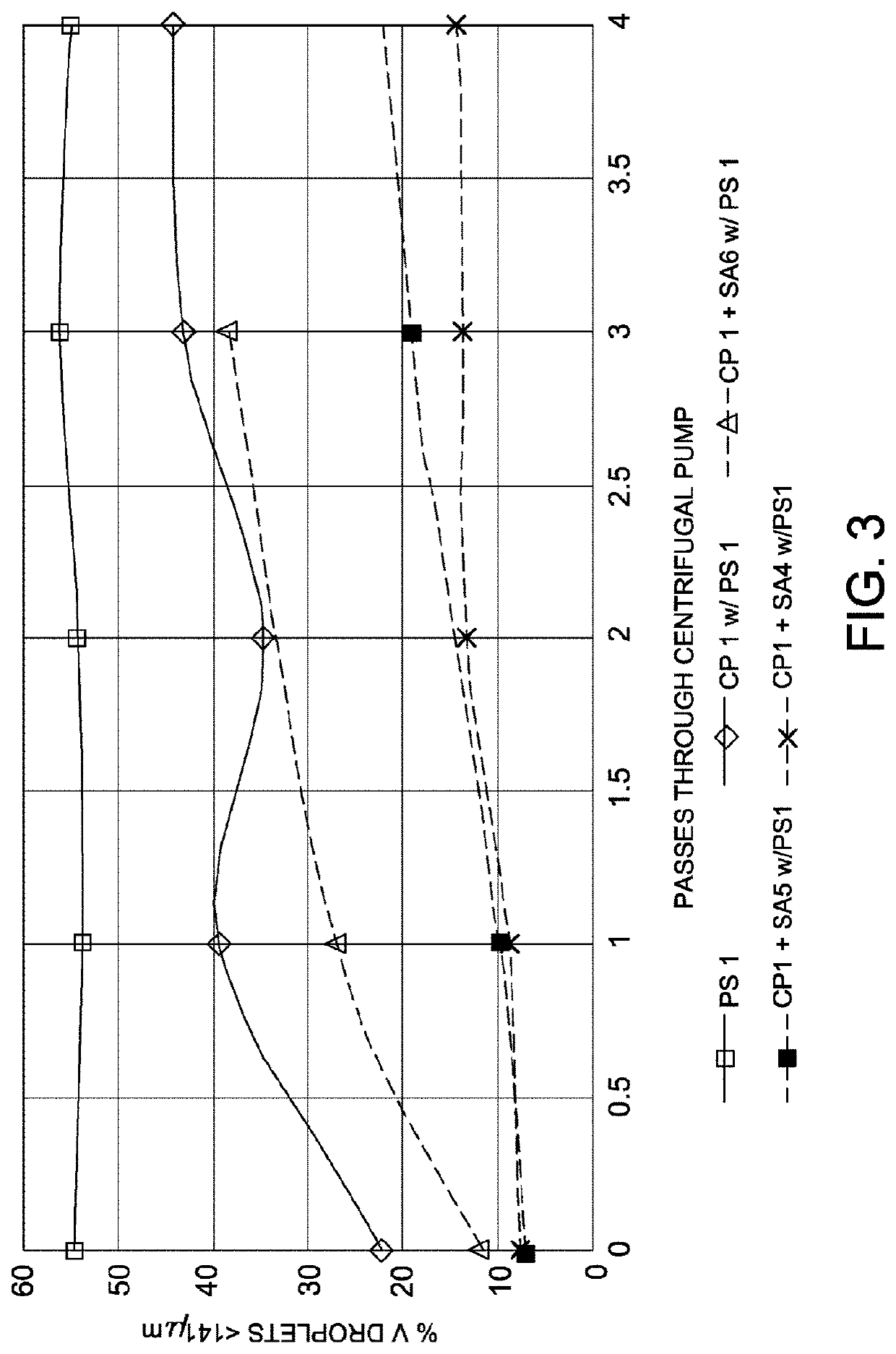Additives to stabilize polyacrylamide co-polymer solutions under high shear conditions
a polyacrylamide and copolymer technology, applied in the direction of biocide, animal husbandry, plant growth regulators, etc., can solve the problems of reducing the effective easy to be subjected to drift, and droplets in drift can be detrimental to adjacent crops, land, water sources, etc., to achieve the greatest efficiency, control water droplet sizes, and improve the stability of hydrated polyacrylamide co-polymers
- Summary
- Abstract
- Description
- Claims
- Application Information
AI Technical Summary
Benefits of technology
Problems solved by technology
Method used
Image
Examples
example 1
Materials and Methods
[0040]This example tests the effect of 3 different products, Shear Additive 1 (SA1), Shear Additive 2 (SA2), and Shear Additive 3 (SA3) at a 0.25% inclusion level with the pesticide solution PS1 and with or without 2 different hydrated polyacrylamide co-polymers, CP1 and CP2 when cycled multiple times through the pump system of FIG. 1 and subsequently sprayed through the XR8002VS (TeeJet Technologies) nozzle for droplet analysis. The parameters and results of this example are provided below in Table 1 and in FIG. 2.
TABLE 1Conc.StartingPumpFinalAdditiveConc.PolymerPPMPesticideConc.Nozzlepsi% V PassesV % ΔV %None—None—PS11.70%XR8002VS455510550None—CP150PS11.70%XR8002VS4522104321None—CP250PS11.70%XR8002VS4513104128SA10.25%CP250PS11.70%XR8002VS459102213SA10.25%CP150P511.70%XR8002VS4514102915SA10.25%CP150P511.70%XR8002VS459102213—(CH2CH2—O)a—(CH(CH3)CH2—O)b—(CH2CH2—O)c—(CH(CH3)CH2—O)dR1—OEO aPO bEO cPO d—R2R1a =b =c =d =R2ave MWmethodSA1H9000H 400calculatedSA2H33000H...
example 2
Materials and Methods
[0042]This example demonstrates the effect of 3 different products, SA4, SAS, and SA6 at 2 different inclusion levels (0.25% for SA4 and SA5, 0.05% for SA6) with the pesticide solution PS1 and with the CP1 co-polymer when cycled multiple times through the pump system of FIG. 1 and subsequently sprayed through the XR8002VS (TeeJet Technologies) nozzle for droplet analysis. The parameters and results of this example are provided below in Table 2 and in FIG. 3.
TABLE 2FinalShearConc.StartingPumpV % AdditiveConc.PolymerPPMPesticideNozzlepsi% V Passes141 μΔV %None—None—PS 1XR8002VS455510550None—CP 150PS 1XR8002VS4522104321SA 40.25%CP 150PS 1XR8002VS45810168SA 50.25%CP 180PS 1XR8002VS45752518SA 60.05%CP 150PS 1XR8002VS451233826—(CH2CH2—O)a—(CH(CH3)CH2—O)b—(CH2CH2—O)c—(CH(CH3)CH2—O)d—R2Polypropylene R1—OEO aPO bEO cPO daveGlycolsR1a =b =c =d =R2MWmethodSA 4H0700H 425calculatedSA 5H01700H1000calculatedSA 6H03500H2000calculated
Results
[0043]As shown by the data and FIG. 3,...
example 3
Materials and Methods
[0044]This example tests the effects of 3 different products, SA7, SA8, and SA9 at a 0.25% inclusion level with the PS 1 and with the CP1 hydrated polyacrylamide co-polymers when cycled multiple times through the pump system of FIG. 1 and subsequently sprayed through the XR8002VS (TeeJet Technologies) nozzle for droplet analysis. The parameters and results of this example are provided below in Table 3 and in FIG. 4.
TABLE 3ShearConc.StartingPumpFinalAdditiveConc.PolymerPPMPesticideNozzlepsi% V PassesV % ΔV %None—None—PS 1XR8002VS455510550None—CP 250PS 1XR8002VS4513104528SA 70.25%CP 250PS 1XR8002VS4510103121SA 80.25%CP 250PS 1XR8002VS459102819SA 90.25%CP 250PS 1XR8002VS4514104127EO / PO—(CH2CH2—0)a—(CH(CH3)CH2—O)b—(CH2CH2—O)c—(CH(CH3)CH2—O)dBlockR1—OEO aPO bEO cPO d—R2ave PolymersR1a =b =c =d =R2MWmethodSA 7H1116 110H1900calculatedSA 8H6.522 6.50H1850calculatedSA 9H13350 1330H14600calculated
Results
[0045]As shown by the data and FIG. 4, compositions incorporating Pol...
PUM
| Property | Measurement | Unit |
|---|---|---|
| total weight | aaaaa | aaaaa |
| droplet size distribution | aaaaa | aaaaa |
| physical properties | aaaaa | aaaaa |
Abstract
Description
Claims
Application Information
 Login to View More
Login to View More - R&D
- Intellectual Property
- Life Sciences
- Materials
- Tech Scout
- Unparalleled Data Quality
- Higher Quality Content
- 60% Fewer Hallucinations
Browse by: Latest US Patents, China's latest patents, Technical Efficacy Thesaurus, Application Domain, Technology Topic, Popular Technical Reports.
© 2025 PatSnap. All rights reserved.Legal|Privacy policy|Modern Slavery Act Transparency Statement|Sitemap|About US| Contact US: help@patsnap.com



